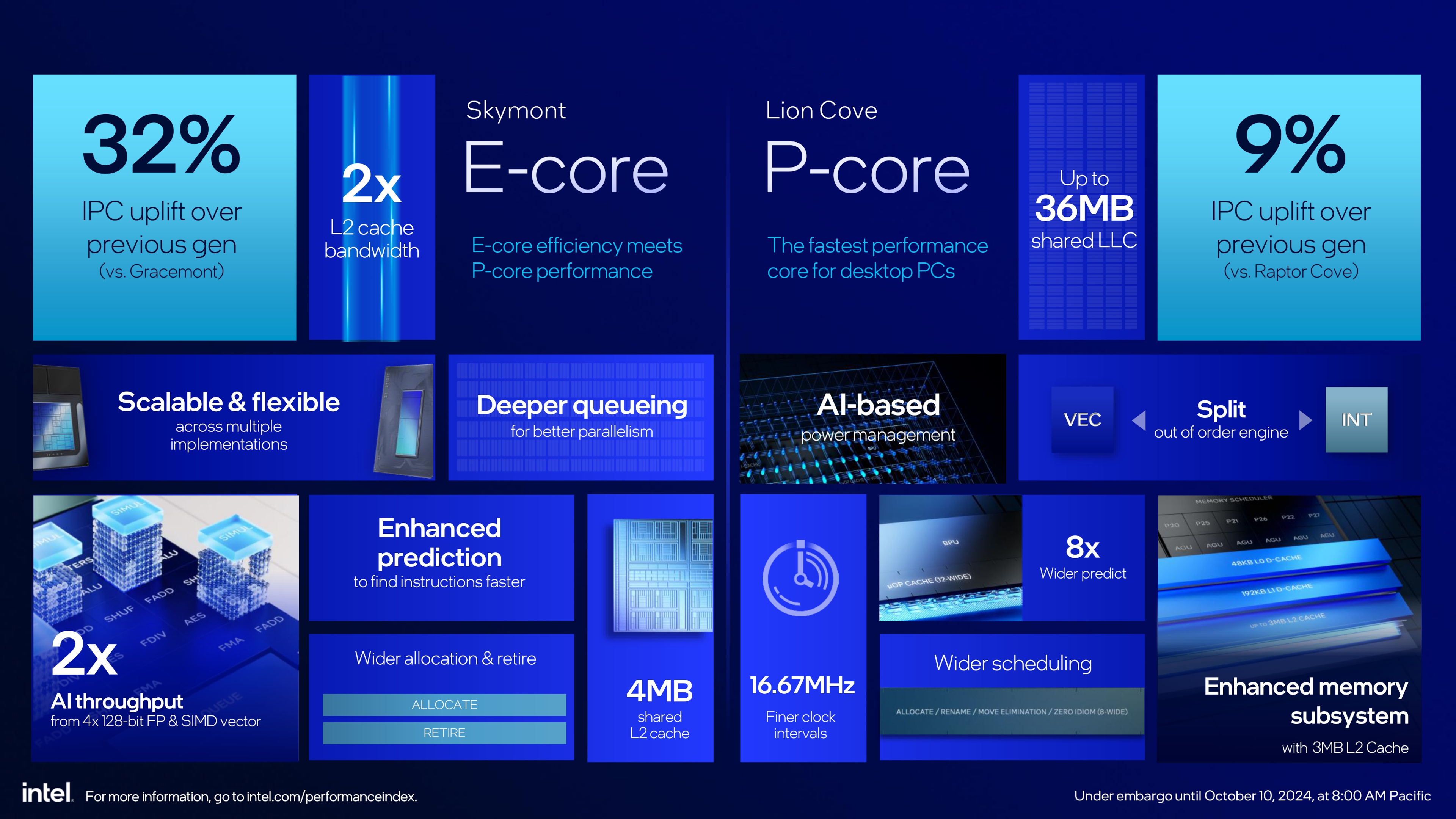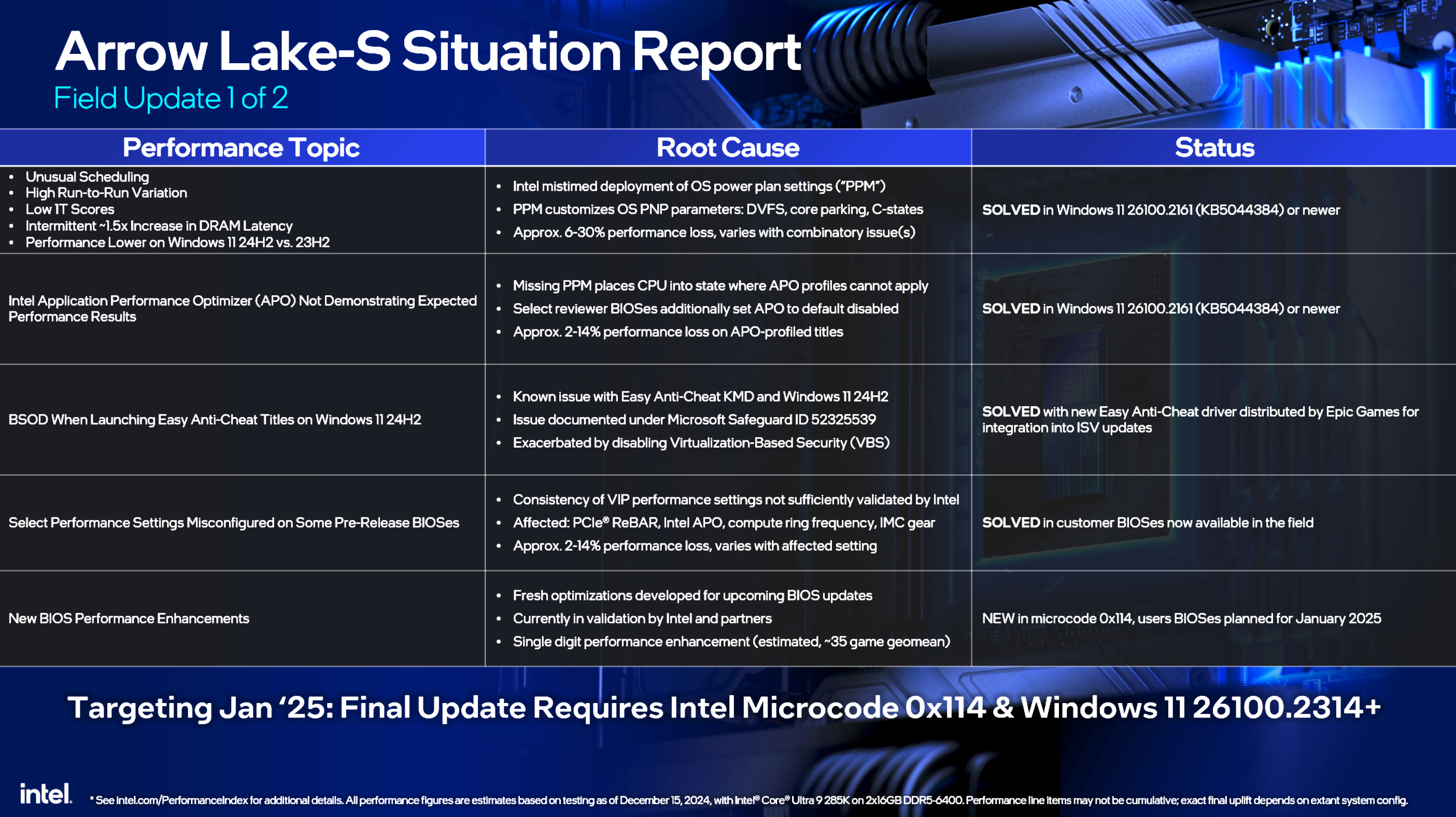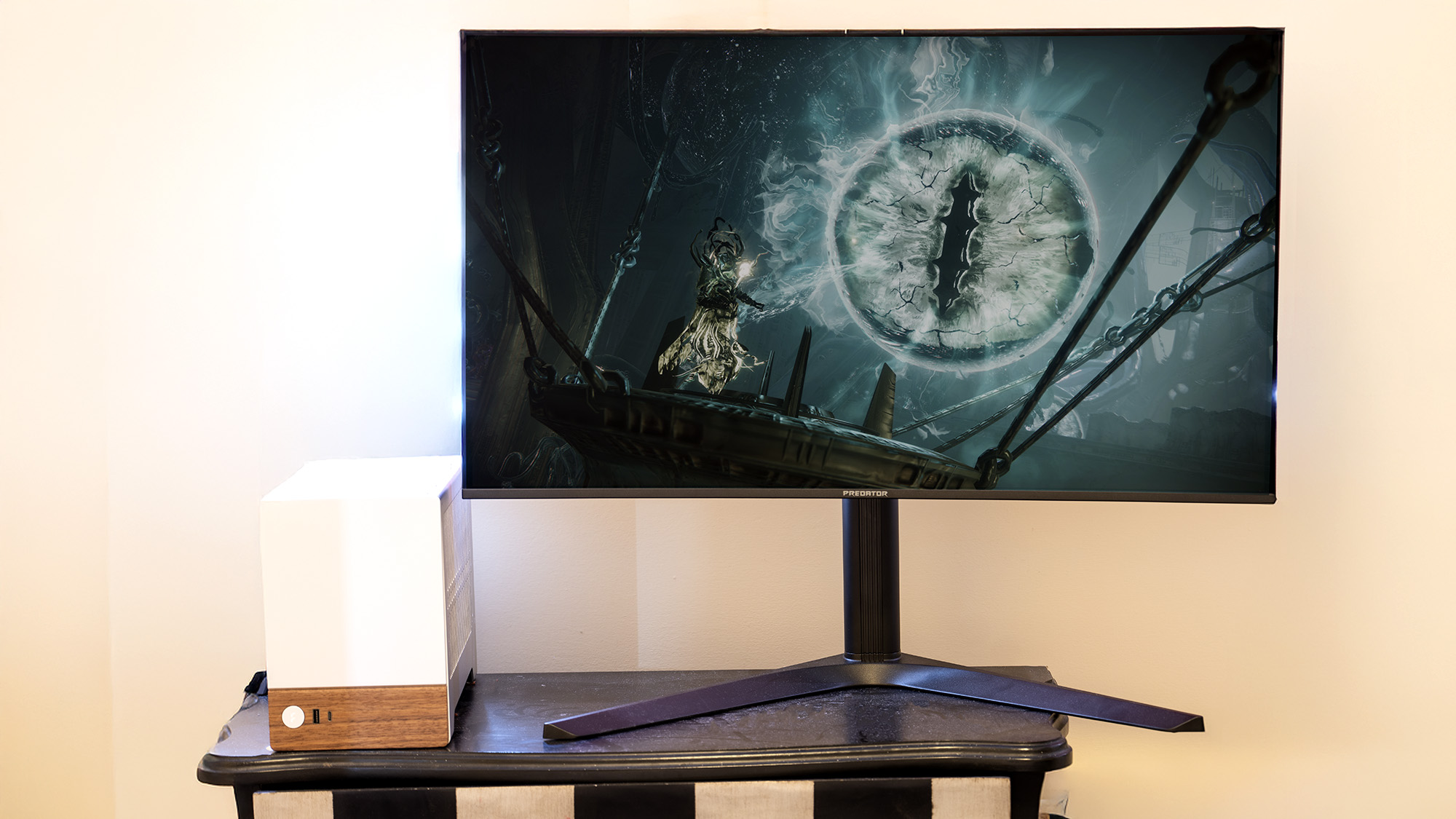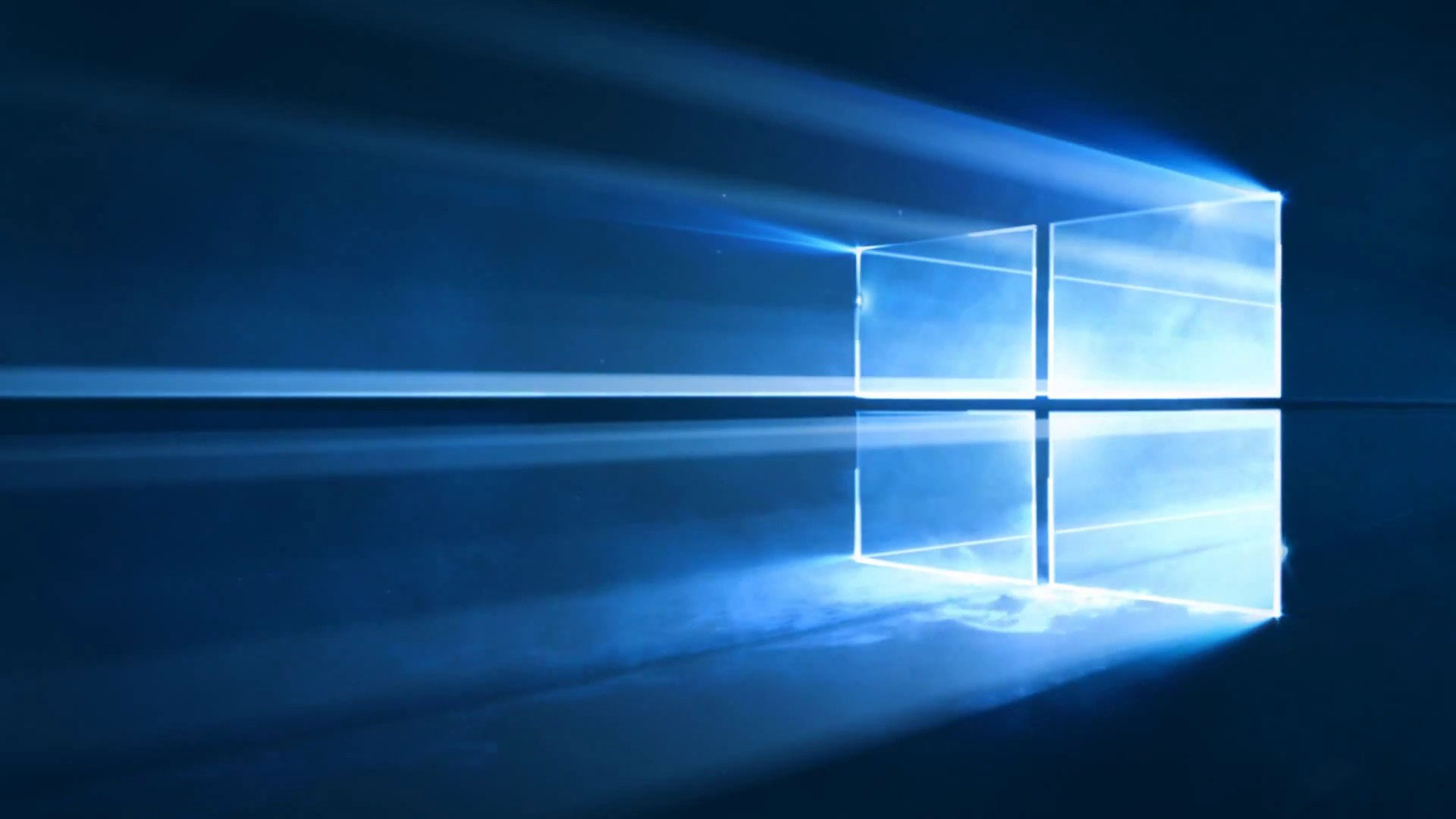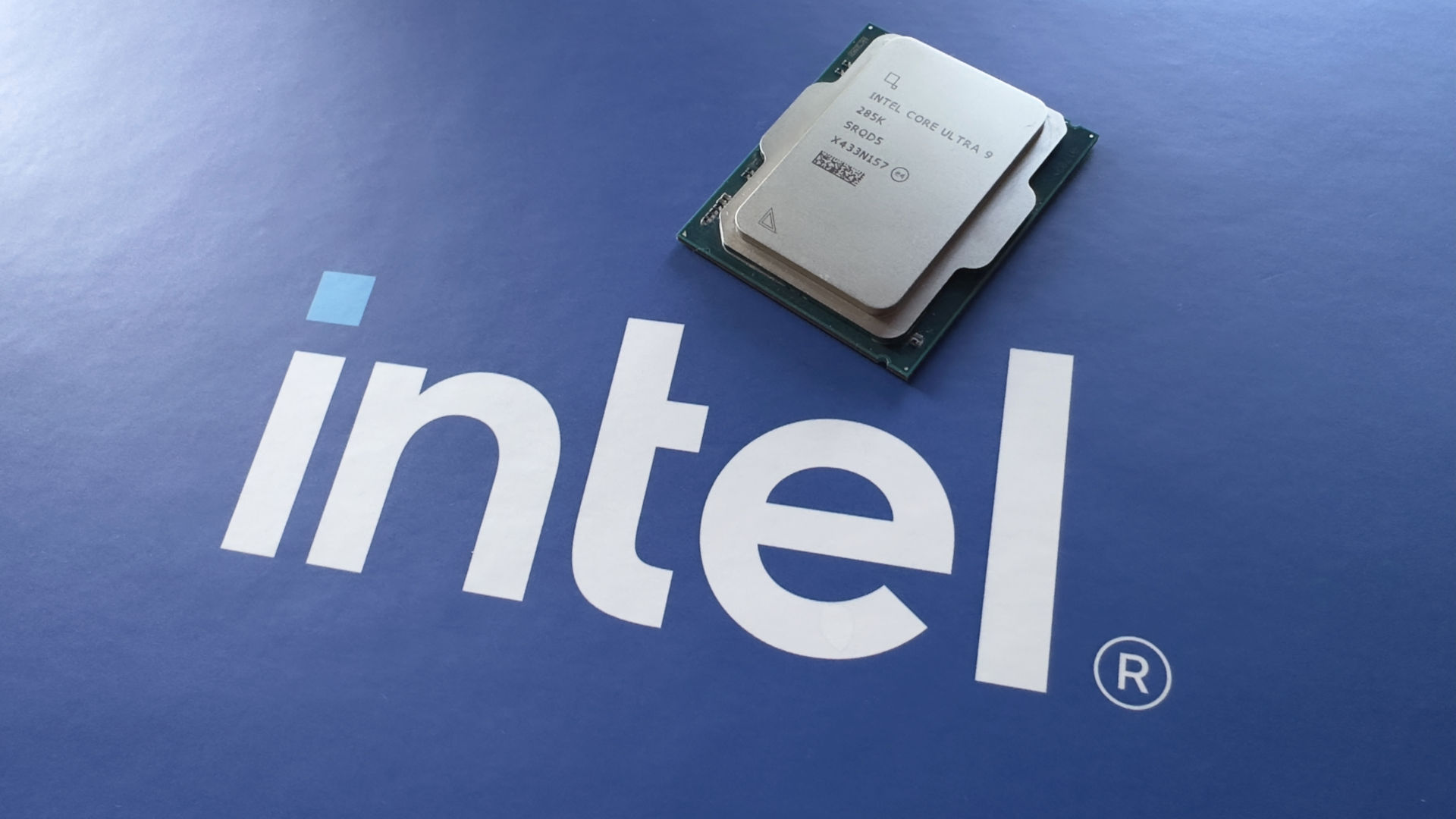
Too little, too late or just what the doctor ordered?
If you’re a regular reader of our hardware news and reviews, you’ll know that Intel’s much-vaunted Core Ultra 200S series of processors not only failed to impress at launch but it’s seemingly been left to flag against the competition. In a new blog post today, which we’ve had early access to, Intel says that while the former is undoubtedly true, it has been busy identifying what went wrong, with four key issues noted and fixes published.
Arrow Lake’s gaming performance was known to be lower than last-gen Raptor Lake’s before the testing even commenced because Intel openly said that this would be the case when it launched its new CPU architecture in October. The primary goal for multi-tiled processors was lower power consumption in games, while still offering generational performance gains in multithreaded workloads.
The latter was certainly achieved but once we all got our hands on the Core Ultra 9 285K and Core Ultra 5 245K (replacements for the Core i9 14900K and Core i5 14600K), it was clear that Intel was experiencing very different gaming performance to reviewers. After a while, though, and after I had spoken with Intel about my results, the truth of the matter came to light: Arrow Lake wasn’t as good as expected and something was obviously amiss.
In the update, Intel notes that its engineers have identified four specific issues that were causing significant problems with gaming performance.
Missing Performance & Power Management (PPM) package
Modern CPUs can operate in all kinds of performance states but they require active support by the operating system in order to function properly. This is done via a PPM package—think of it as a driver that controls clock speeds and other timings, depending on what power settings the OS is using.
Intel didn’t schedule the PPM for Arrow Lake to appear in a Windows Update, in time for reviews and retail availability of the Core Ultra 200S chips. The results? In Intel’s words, “Unusual CPU scheduling behaviour; artificial performance increases when cores are disabled or affinitized; high run-to-run variation in benchmarks; reduced single-threaded performance; intermittent DRAM latency spikes; unexpected performance differences between Windows 11 23H2 and 24H2.”
All of these problems from a ‘simple’ power profile just go to show just how complex today’s CPUs really are but the fact that Intel didn’t schedule the profile to appear in a Windows update in time for launch is somewhat annoying to read.
At least these all should be a thing of the past now, as the Windows 11 update KB5044384 apparently contains the profile and Intel says that alone can address up to 30% of performance loss against expectations.
Intel Application Performance Optimizer could not take effect
Intel’s processors have been using a hybrid architecture (aka full performance, high power P-cores and lower performance, lower power E-cores) for four generations of processors, including Arrow Lake, and they all require a bespoke thread scheduler to ensure that the correct cores are handling a game’s threads, to ensure best performance.
Application Performance Optimizer (APO) is a tool that manages that process for specific games and Intel was using it for its pre-launch performance data. However, the missing PPM meant that APO just wouldn’t do anything, leaving up to 14% of game speed off the table.
With the PPM now in the KB5044384 update it should work but it’s worth noting that few reviewers, myself included, ever use APO when first testing an Intel CPU. Oddly enough, when I did try APO on a 285K, it did work so I can only assume I had the Windows update by then.
For actual gaming, though, it does make sense to install APO and have it optimise thread scheduling in the games it supports. You’re getting a free performance boost, after all.
BSODs when launching games using Easy Anti-Cheat service
I didn’t experience this issue while reviewing the Core Ultra 9 285K and Ultra 5 245K but that’s simply because no games in our CPU benchmark suite use Epic’s Easy Anti-Cheat service. However, it turns out that there’s a conflict between Windows 11 24H2 and older versions of EAC, which Epic has now addressed and is pushing the update out to developers.
That’s good news for fans of Fortnite, for example, but this doesn’t seem to be something that’s symptomatic of Arrow Lake, just Windows. It may well be a case that it is but only with the 24H2 update, but for anyone using 23H2, the EAC fix won’t change any game’s actual performance.
Performance settings misconfigured on reviewer/early BIOSes
Testing Arrow Lake was an exercise in frustration, as motherboard vendors kept releasing new BIOS updates throughout the pre-review period. I noticed multiple differences between how motherboards were configured to run Core Ultra 200S chips—for example, the ring bus clock is meant to be constant but one manufacturer set it to scale down, as required with Raptor Lake.
Intel says it had noticed that so-called ‘very important settings’ were inconsistently being applied, such as resizeable BAR, Intel APO, compute tile ring clock, memory controller ratio (aka gear), and sustained and transient power limits.
That’s no small list and together they account for issues like aberrantly high memory latency (up to two times expected values), erratic ring clocks, high run-to-run deviation for dynamic or unpredictable workloads, and no performance uplift from BAR or APO.
Apparently, this has also been resolved and “current BIOS releases for Intel Z890 motherboards have harmonized these settings.” However, I’m currently using an MSI MEG Z780 Hero motherboard with its latest BIOS, but it’s still letting the ring clock vary. Whether this is an Intel or MSI problem, I can’t tell at this point because I only have MSI boards to hand.
More to come
Intel rounds off its blog by saying that it has identified further BIOS improvements that it’s currently in the process of validating and is targeting a firmware release, with all these updates and microcode 0x114, sometime in late January. It plans on presenting all of these findings in detail at CES 2025.
Once all of that takes place, I will retest the Core Ultra 9 285K’s gaming performance, just to see how much better it is after all this work. Whether it’s enough for me to be able to recommend an Arrow Lake chip over the likes of the Ryzen 7 9800X3D for gaming or the Ryzen 9 9950X for content creation is another matter entirely.
I’m genuinely pleased that Intel has worked on resolving Arrow Lake’s problems but time will tell if it’s a case of too little, too late.
